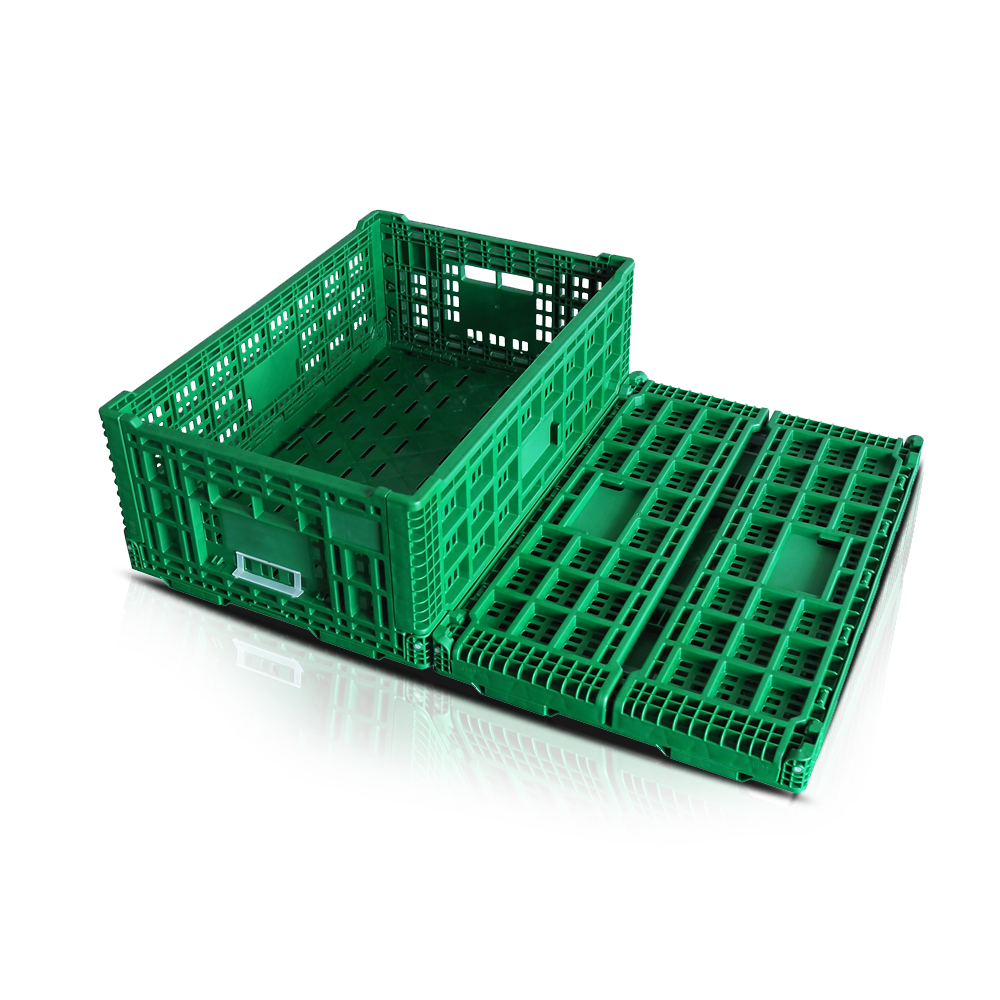The structural design of a plastic crate plays a crucial role in preventing bruising and damage to fruits during transportation. Here are the key ways in which the design contributes to fruit protection:
Ventilation and Airflow:
Perforations or Vent Holes: Many plastic fruit crates are designed with strategically placed holes or slats to allow for proper ventilation. This airflow helps maintain an optimal temperature and prevents the buildup of moisture, reducing the risk of spoilage and minimizing pressure points that could bruise the fruit.
Shock Absorption:
Flexible Material: The plastic used in crates can absorb minor shocks and vibrations that occur during transport. While not as rigid as wood or metal, the slight flexibility of plastic helps cushion the fruit, reducing the likelihood of bruising.
Reinforced Corners and Edges: Many crates have reinforced corners and edges to distribute weight more evenly. This structural reinforcement helps prevent pressure points that could cause the fruit to crush under its own weight or during stacking.
Stackability:
Interlocking Design: Plastic fruit crates are often designed to be stackable, meaning they can be securely placed on top of one another without shifting. This prevents crates from sliding or tipping during transport, which can lead to bruising or damage.
Weight Distribution: The design ensures that the weight of stacked crates is transferred to the crate walls rather than the fruit inside. This prevents the fruit from being compressed by the weight of the upper crates.

Smooth Interior Surfaces:
Minimized Friction: Plastic crates typically have smooth interior surfaces, reducing friction between the fruit and the crate. This minimizes abrasions or skin damage during movement and handling.
No Sharp Edges: Plastic crates are designed without sharp edges or rough surfaces, unlike wooden crates that might have splinters. This reduces the chances of cuts or punctures on the fruit's surface.
Custom Fit for Different Fruits:
Size and Shape Specificity: Some plastic crates are designed with custom compartments or dimensions to suit specific types of fruit. This prevents excessive movement of the fruit within the crate, limiting collisions and bruising.
Durability and Rigidity:
Resistance to Deformation: Plastic crates are durable and less prone to warping or breaking compared to cardboard or wooden crates. Their ability to maintain shape under stress means fruits are not crushed during loading, unloading, or transport.
Collapsible or Modular Designs:
Flexible Compartments: Some modern plastic crates come with adjustable or modular components that can be adapted to secure different fruit sizes. These compartments keep the fruits separated and reduce the risk of them bumping into each other.
The structural design of plastic crates ensures proper ventilation, absorbs shocks, and provides a secure, non-damaging environment for fruits, all of which help to prevent bruising and damage during transportation.












ZHEJIANG ZHENGJI PLASTIC INDUSTRY CO. ,LTD born in 1990’s is a professional manufacturer of plastic collapsible boxes, folding crates, storage bins, moving dolly and other plastic products items, etc.
 +0086-573-80886008
+0086-573-80886008Copyright © Zhejiang Zhengji Plastic Industry Co.,Ltd.All Rights Reserved.
